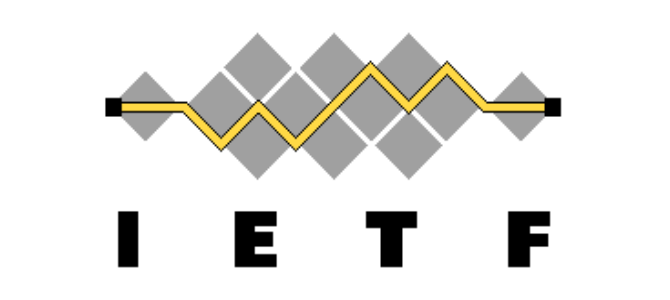This article is written in an effort to aid those who are considering Knot DNS as a replacement for OpenDNSSEC.
More specifically, in this article we’ll be showing how to:
- make Knot use HSMs via the PKCS11 interface
- seamlessly transition from OpenDNSSEC to Knot
- then transition from HSM to automatically managed in-memory keys
If you’ve never interacted with Knot before, please familiarize yourself with the basics. Our documentation provides a great novice-friendly introduction.
Knot DNS in a Complex DNSSEC Topology
Knot DNS has many powerful and useful features, but sometimes it might be difficult to see all the intricate ways in which they interact and complement each other. In this article I’ll attempt to clear up some of that confusion by showcasing a realistic moderately-complex DNS infrastructure built on instances of Knot. Our focus will be largely on DNSSEC.
On the Drawbacks, Weaknesses and Appropriate Uses of NSEC3
Let’s start with a brief reminder of non-existence proofs in DNSSEC. If you have a solid understanding of the topic, feel free to skip this introduction.
The standard DNSSEC solution to proving a record’s non-existence is the NSEC RR. It contains the next node in the lexicographical order and a bitmask of available RTYPEs:
Authenticated DNSSEC Bootstrapping in Knot DNS
When a domain owner decides to have their zone secured with DNSSEC, adding validation keys and signatures to the zone are only half the story. To allow resolvers to start validating signatures, it is also necessary to link at least one of the domain’s validation keys (DNSKEY records) to the global DNSSEC chain of trust.
RFC 9432: DNS Catalog zones
A DNS zone is usually served by multiple authoritative servers, which is actually recommended for the sake of redundancy. Large authoritative DNS operators even combine different name server implementations to avoid complete infrastructure outage in case of any software error. For synchronizing zone contents between authoritative servers, a DNS-specific mechanism is available, called zone transfer. It is well established and supported by all common DNS implementations. It enables both full zone transfer (AXFR) and incremental update (IXFR).
.CZ zone generation and signing underwent technical inspection, original components were replaced with Knot DNS
I try to describe the basic building blocks of our national domain registry administration to people around me quite often. Yet (or maybe for that very reason), the .cz is still perceived as something that simply works. Just like when you get in your car to take your children to school every morning. You expect the journey to take the usual 10 minutes (or 15 if you need to refuel) and that you won’t have to deal with any trouble. Even though you know that you need to change the oil regularly, check and change worn parts, or repair defects caused by operation, most of you leave these “out of order” cases to service professionals or at least a handy neighbor and avoid having to wash your hands from automotive grease or to remember the required type of brake pads. Modern cars are able to inform you of any necessary maintenance and all you have to do is dial the correct phone number. Although you don’t fully understand the person at the other end of the line, they manage to get through to you because you have a basic idea of how a car works.
Knot DNS 3.0 News
Recently, version 3.0 of Knot DNS – an open-source implementation of an authoritative DNS server – has been released. Despite the version number, the software isn’t changing much. There are slightly more new features than in common feature releases such as 2.9. However, the features added in 3.0 don’t change any behaviour, unless the user turns them on. The migration from 2.9 to 3.0 is therefore seamless.
Error in DNSSEC implementation on F5 BIG-IP load balancers
During the development of the DNS Knot Resolver, CZ.NIC Labs have managed to reveal a security flaw that makes it possible to bypass DNSSEC security on F5 load balancers and cause denial of service. These products are being used, for example, in some internet banking applications, including those of Czech banks and public authorities. From the perspective of a user attempting to access an internet banking service, a successful attack exploiting this error would manifest in the browser suddenly reporting an “address not found” error and the service becoming unavailable.
How to survive scheduled DNS maintenance
DNS has been in use on the Internet for more than 30 years — now it is time for its worldwide maintenance that shall, for the first time in the existence of DNS, require coordinated actions from all operators of DNS servers and DNSSEC validators.
ID4me – single sign-on and domains the German way
On August 14, over 50 representatives of internet organizations met at the headquarters of DENIC, the German top-level domain registry, to attend the first ID4me summit. ID4me is the current name of the project, which was started last year under the name DomainID — I mentioned it briefly in my presentation at our last year’s conference IT 17.2. It was initiated by the .DE domain administrator, together with the major German registrar 1&1, and Open-Xchange, the operator of online collaboration tools. However, there are many other companies that are willing to support it, including the UK domain registry Nominet. The goals set by the project are quite familiar to us — reducing the number of passwords and registrations that people need while using the Internet. Like CZ.NIC with its mojeID project, the authors of ID4me have come to the conclusion that the domain world is just the place for an attempt to achieve these goals.
